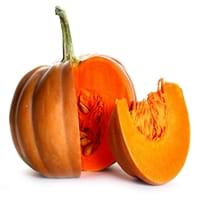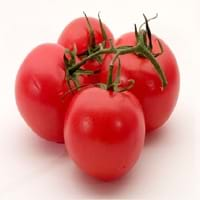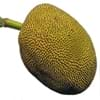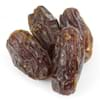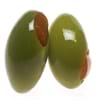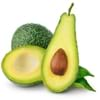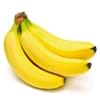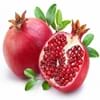Health Benefits
Arthritis treatment, Cancer prevention, High Cholesterol Regulation, Lower blood pressure, Helps Prevent cataract, Prevents gall stones, Ulcer treatment, Weight loss properties
Anti depressant, Cancer prevention, Heart care, Muscle pain relief, Prevents constipation, Regulation of heart rate, Weight loss properties
General Benefits
Boosts respiratory health, Eliminate parasites and infections, Protects against birth defects, Strengthens bones
Controls blood pressure, Eye care, Maintains healthy cholesterol level, Strengthens bones
Skin Benefits
Heals sunburn, Hydrates skin, Skin rejuvenation
Anti-aging benefits, Heals sunburn, Skin rejuvenation, Treatment of acne, Treatment of skin diseases
Hair Benefits
Regulates hair growth
Good conditioner, Prevents hair loss, Softening mask
Allergy Symptoms
Abdominal cramps, Anaphylaxis, Digestive Problems, Dizziness, Eczema, Fainting, Hives, Inflammation, Itching, Tingling sensation in wrist and face, Vomiting, Wheezing
Anaphylaxis, Coughing, Diarrhea, Eczema, Hives, Itching sensation in throat, Nausea, Skin Rashes, Runny nose, Sneezing, Swelling of mouth, tongue or lips, Vomiting, Wheezing
Side Effects
Kidney and gallbladder diseases
Heart burn
Best Time to Eat
Along with meal, Don't eat after meal, Morning time (before lunch)
Along with meal, Don't consume at night and before bed, Morning time (before lunch)
Vitamin B5 (Pantothenic Acid)
Vitamin C (Ascorbic Acid)
Vitamin K (Phyllochinone)
Calories in Fresh Fruit with Peel
Calories in Fresh Fruit without Peel
Not Available
Calories in Frozen Form
Not Available
Calories in Dried Form
Not Available
Type
Berry
Berry, Fruit vegetable
Season
All seasons
All seasons
Varieties
Jarrahdale, Peanut, Lakota, Cow, Sugar, Caribean, Red kuri, Buttercup and Pink lady
Better Boy, Early Girl, Beefsteak, Beefmaster, Pink Brandywinem, Caspian Pink, Thai Pinks, Hawaiian Pineapple, Kellogg’s Breakfast, Cherokee Purple, Black Ethiopian and Paul Robeson
Color
Blue, Green, Orange, Red, White
Green, Orange, Pink, Purplish black, Red, White, Yellow
Inside Color
Creamy Yellow
Red
Taste
Creamy, Soft, Sweet
Sour, Sweet
Origin
Mexico
Central America, South America
Soil Type
Clay loam, Sandy loam, Well-drained
Loam, Sandy loam
Climatic Conditions
Warm to hot climate
Sunny, Warm
Facts about
- The name pumpkin has its roots in the Greek word ‘pepon’, meaning ‘large melon’.
- The largest pumpkin ever grown weighed 1,140 pounds.
- Pumpkins were once known for removing freckles & curing snake bites.
- Around 10,000 varieties of tomatoes are grown in the world.
- In Buñol, people celebrate the Tomatina festival where around 1.5 lakh tomatoes are used.
- As per Guinness book of records, heaviest tomato weighed 3.51 kg.
Other Countries
Egypt, India, Indonesia, Iran, Italy, Mexico, Russia, Spain, United States of America
Brazil, Egypt, India, Iran, Italy, Mexico, Spain, Turkey, United States of America
Top Importer
United States of America
Nigeria
Top Exporter
China
Netherlands
Botanical Name
Cucurbita maxima
Solanum lycopersicum
Synonym
Cucurbita pepo, Squash
Lycopersicon esculentum
Subkingdom
Tracheobionta
Tracheobionta
Division
Magnoliophyta
Magnoliophyta
Class
Magnoliopsida
Magnoliopsida
Subclass
Dillenhidae
Asteridae
Order
Cucurbitales
Solanales
Family
Cucurbitaceae
Solanaceae
Species
Cucurbita mixta
S. lycopersicum
Generic Group
Not Available
Nightshade
Difference Between Pumpkin and Tomato
We might think that Pumpkin and Tomato are similar with respect to nutritional value and health benefits. But the nutrient content of both fruits is different. Pumpkin and Tomato Facts such as their taste, shape, color, and size are also distinct. The difference between Pumpkin and Tomato is explained here.
The amount of calories in 100 gm of fresh Pumpkin and Tomato with peel is 26.00 kcal and 18.00 kcal and the amount of calories without peel is 30.00 kcal and Not Available respectively. Thus, Pumpkin and Tomato belong to and category.These fruits might or might not differ with respect to their scientific classification. The order of Pumpkin and Tomato is Cucurbitales and Solanales respectively. Pumpkin belongs to Cucurbitaceae family and Tomato belongs to Solanaceae family. Pumpkin belongs to Cucurbita genus of Cucurbita mixta species and Tomato belongs to Solanum genus of S. lycopersicum species. Beings plants, both fruits belong to Plantae Kingdom.
